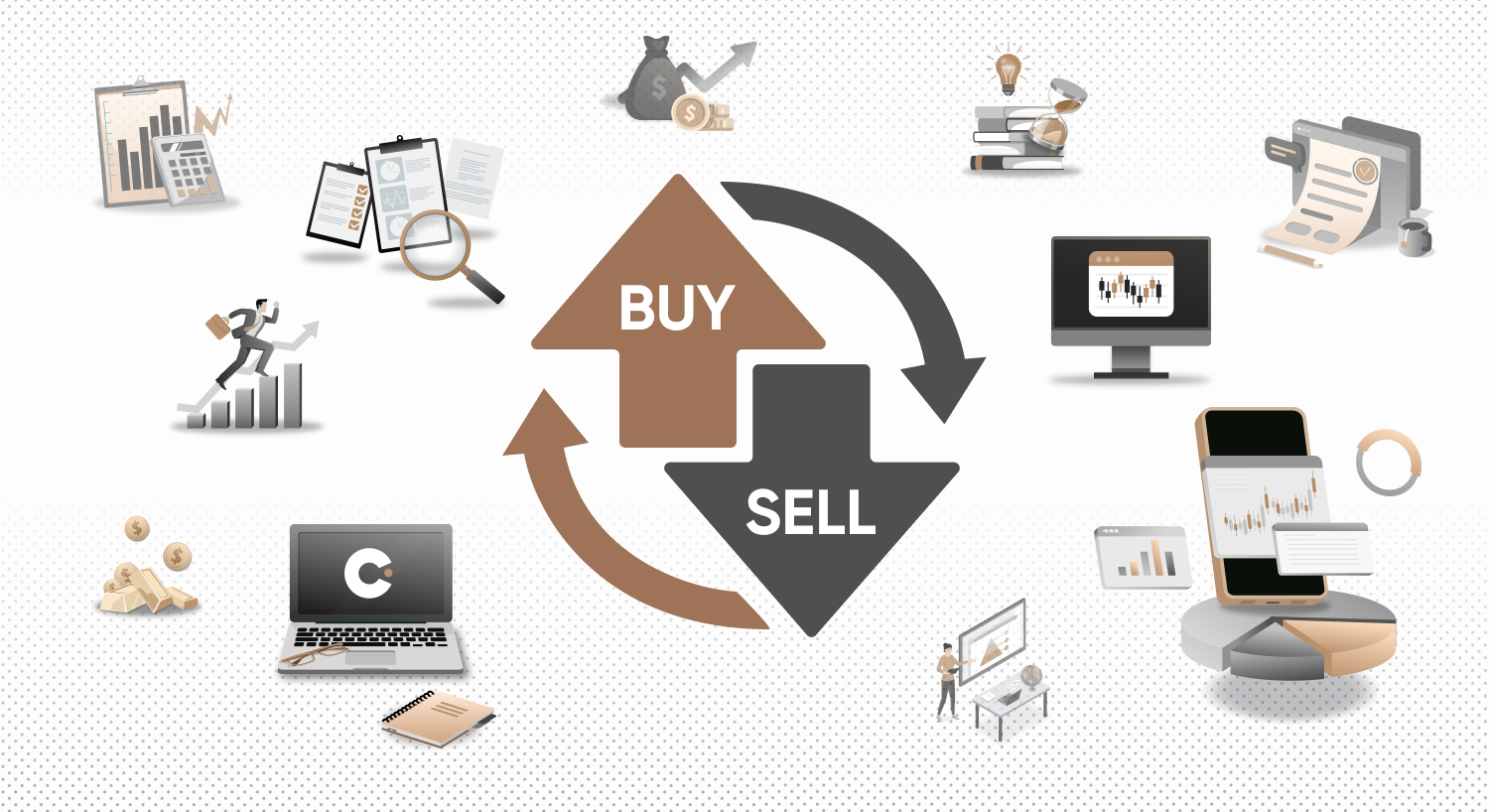What is trading?

What is trading?
In finance, trading is the process of buying and selling assets in a relatively short period of time. It differs from investing in that some traders are able to make money if the market drops by ‘going short’, in effect betting on a price fall.
Key takeaways
-
The definition of trading in finance is when a trader buys and sells assets in the hope of making a profit.
-
Widely traded assets including stocks and shares, commodities, foreign exchange (forex) and derivatives, such as options, futures and contracts for difference (CFDs).
-
There are a wide variety of trading strategies, including scalping, day trading, swing trading, position trading and arbitrage.
-
Trading can be highly risky, with volatile markets potentially causing even the best-prepared and most knowledgeable traders to lose money.
Trading is a rather large and sometimes complex world. Here we will explain how trading works, some of the types of trade and markets, some trading strategies and the pros and cons of trading.
How trading works
Trading involves opening a trade, or position. A trader could choose to enter a market at one price point and exit the market, or close their position, at another one. In some cases, traders can decide whether to “go long” – in effect, bet on the market they are trading in to rise – or go short by backing it to fall. A trader could use a range of analytical tools to help them decide what they might consider the most likely next market move to be. However, it is important to remember that markets can be volatile, so even the best-prepared traders can expect to lose money.

Types of trades
Traders can utilise a variety of assets, or securities, to trade in. These can include:
-
Stocks and shares. These are assets that represent ownership in a company. They are traded on stock exchanges and may give rewards in the form of dividends.
-
Bonds. Debt securities that represent a loan made by an investor to a company or government entity.
-
Commodities. Raw materials or agricultural products that can be bought or sold, such as gold, oil or wheat.
-
Currencies. Foreign exchange (forex) instruments that allow people to trade one currency for another.
-
Mutual funds. Investment vehicles that pool money from multiple investors to purchase a diversified portfolio of stocks, bonds, or other assets.
-
Exchange-traded funds (ETFs). Similar to mutual funds, but traded on exchanges like a stock.
-
Certificates of deposit (CDs). Deposits that earn interest over a fixed period of time.
-
Derivatives. Financial contracts that derive their value from an underlying asset, such as futures, options, and contracts for difference (CFDs).
Trading strategies
Traders can also use a variety of trading strategies. These can include:
-
Scalping or micro-trading. Scalp or micro-trading involves buying and selling within a very short space of time, with trades sometimes only open for mere seconds.
-
Day trading. Day trading is, as the name suggests, the process of trading over the course of a single day, with positions open when the markets do and closing at the end of the day’s trading.
-
Swing trading. Swing trading is a form of trading which involves positions being open for days to weeks. It is a mid-term form of trading
-
Position trading. Position trading sees trades left open for weeks, months, and sometimes even years.
-
Arbitrage. Arbitrage involves buying and selling the same security or similar securities in different markets, in order to profit from price differences between them.
Pros and cons of trading
In trading, as in all parts of the financial world, there are advantages and disadvantages.
Advantages of trading
-
Potential for returns. Trading could offer the potential for returns. With the right strategy, a trader could make a profit by buying and selling assets like stocks, bonds, and commodities.
-
Flexibility. Traders could have the flexibility to buy and sell assets as they see fit, allowing them to take advantage of market trends and opportunities.
-
Access to global markets. Trading allows access to global markets, which can provide greater opportunities for diversification and risk management.
-
Educational. Trading could help someone learn more about financial markets, economics, and investing strategies, providing valuable knowledge for personal and professional growth.
Disadvantages of trading
-
High risk: Trading could be high-risk, with the potential for significant losses.
-
Emotionally difficult : Trading could be stressful, with the risk of making decisions based on fear or greed, rather than logic and strategy.
-
Time consuming: Trading could take up a lot of time and requires significant effort and attention to analyse market trends and identify opportunities.
-
Transaction costs: Trading incurs transaction costs, such as commissions and fees, which can eat into profits and increase losses.
Conclusion
In conclusion, trading is the process of buying and selling assets on markets in the hopes of making a profit. While trading could make traders money, it could also incur losses, because markets could be volatile and could change in a way that could damage a traders position.
Trading is a key part of the financial world, though, and should not be confused with investing. Investing is usually a longer-term strategy than trading although some forms of trading, such as position trading, could take up a similar time span.
Regardless of what asset they are trading in or what strategy they are using, traders should always remember that they will need to do their own research and never trade with more money than they can afford to lose.
FAQs
What does trade mean in finance?
In finance, trading is the process of buying and selling assets over a certain time frame, with the aim of making a profit.
What are the types of trading?
The types of trading include day trading, swing trading, position trading and arbitrage.
Does trade mean buy or sell?
Trading involves buying and selling. Therefore, trade does not mean either buy or sell but, in effect, both.